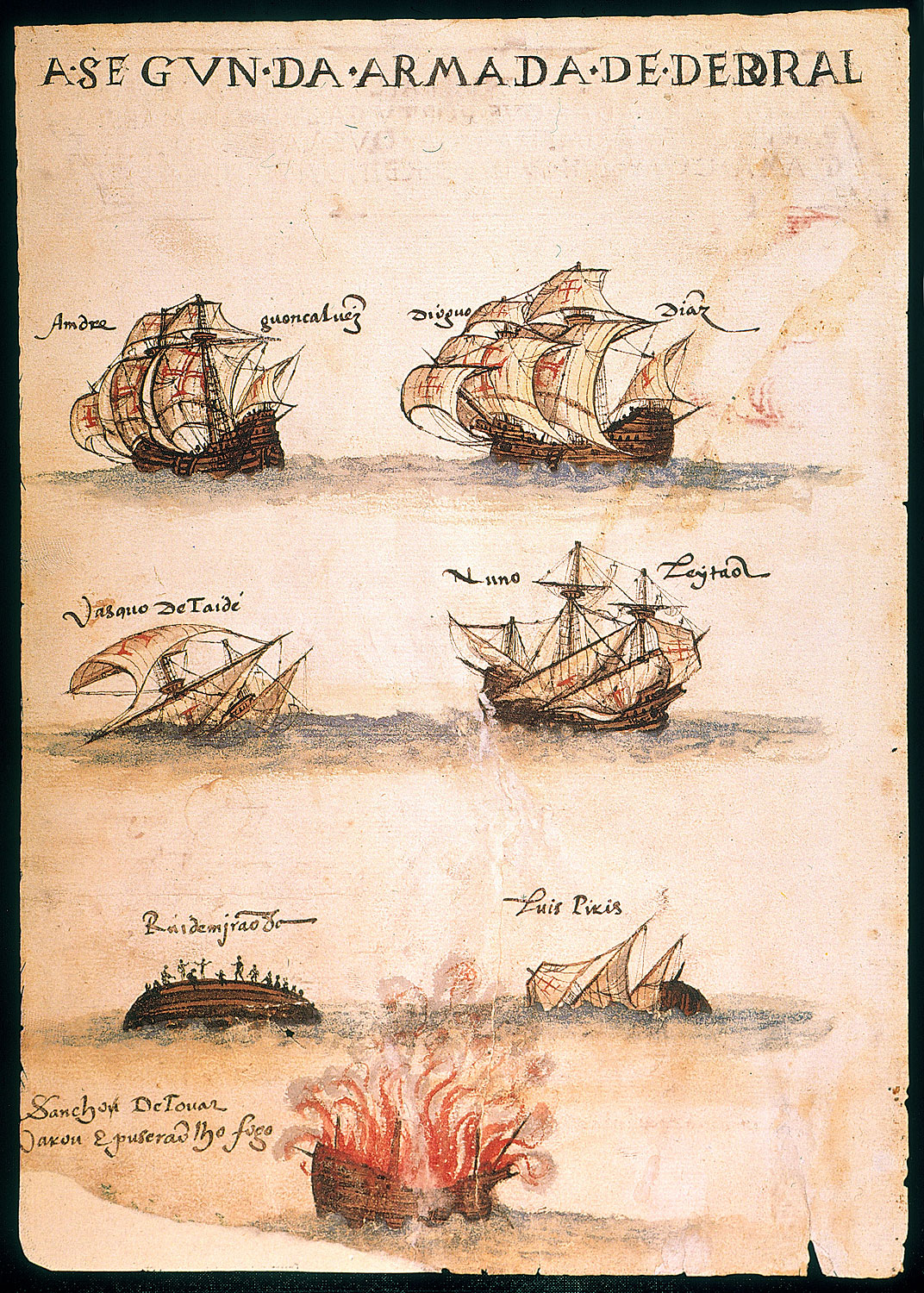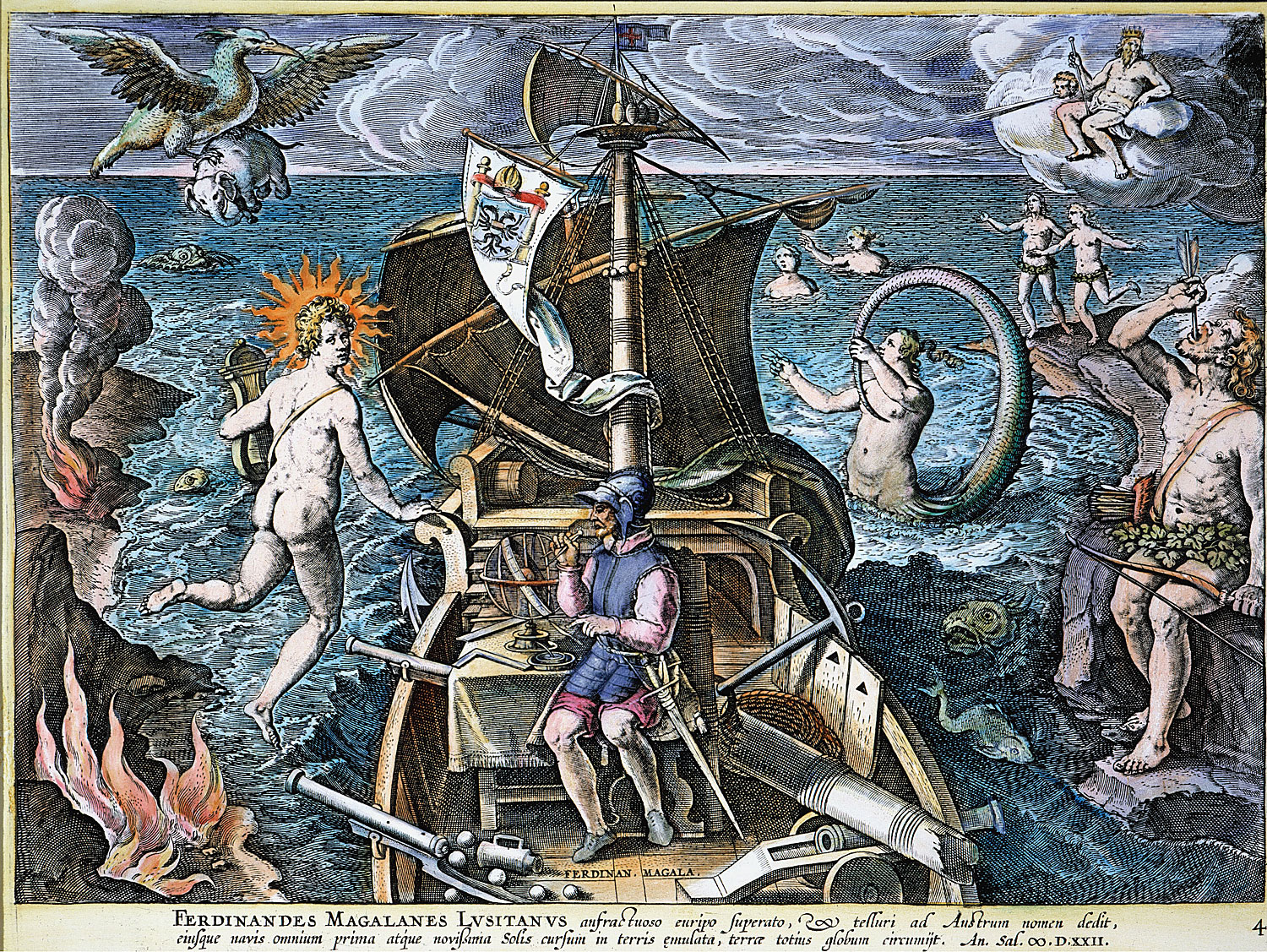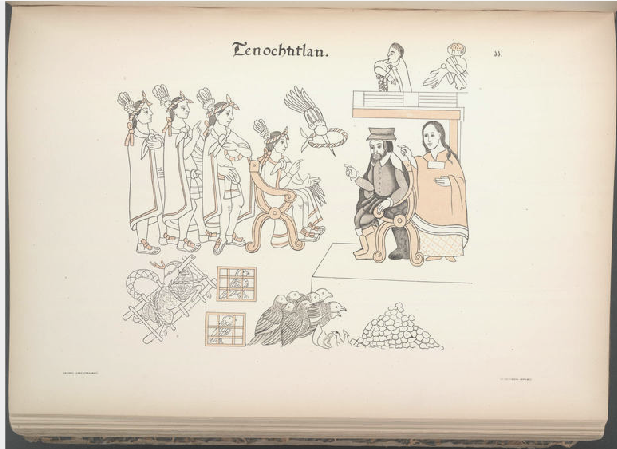The traditional narratives of the great explorers--Columbus, Vespucci, Cabral--are well known. With a combination of advanced technology, pluck, and luck, these legendary men sailed fearlessly towards the horizon, risking (and sometimes losing) their lives in the pursuit of riches, knowledge, and glory. They "discovered" a New World, one which would encourage Europeans to improve their technology, rethink their scientific methods, and reconsider their very place in the universe. Before long, Europeans were using the oceans to consolidate vast overseas empires, spreading their people and culture to every corner of the earth.
This perspective, we are now aware, is based on a misleading and Eurocentric point of view. Recent scholarship has highlighted the fact that the Americas already possessed highly advanced civilizations with detailed knowledge of their environs long before their supposed discovery by outsiders. As historians such as Colin Calloway have noted, the novel situation following European/Indian contact created what were in effect new worlds for American Indians as well. The Huejotzingo Codex included in this topic's sources is a vivid example of Mesoamerican culture and technology in an early stage of hybridization. Although the nuances of these new worlds differed based on local populations and circumstances, Indian groups and Europeans both engaged in an active exchange of ideas, technology, and biota, making the post-discovery Americas a cultural milieu unique in the annals of history (Calloway 1997). Despite the fact that Native Americans would eventually be dispossessed of their territory by disease and conquest, the Europeanization of the Americas was by no means a forgone conclusion in the sixteenth and seventeenth centuries. The rather tragic aftermath of European discoveries should not, however, belittle the remarkable and consequential achievements of the explorers themselves, or of the specialists that created the ships and navigational instruments that made their voyages possible.
According to historian Jorge Canizares-Esguerra, the renowned Iberian explorers quested for cosmographic knowledge within the context of a baroque mentality. They were thus understood to be a sort of modern knight, whose chivalric quests were for knowledge and a universal Catholic empire. Men like Vespucci and Magellan, both portrayed in the sources, conceived of themselves as armored crusaders, brave warriors who had traded in their lances for astrolabes and their horses for ships (Canizares-Esguerra 2006).
Seaworthy ships were, after all, a sine qua non of transoceanic discovery. Marine historian Roger C. Smith considered the Portuguese caravel, a fusion of shipbuilding styles from Northern Europe and the Mediterranean, to be perhaps the single most important piece of technology of the early modern period. Caravels, like those in the source showing Cabral's fleet, were the basis for the Iberian sailing ships of the fifteenth and sixteenth centuries and, combined with new navigational instruments and improved maps, enabled Iberia to explore and conquer Latin America (Smith 1993).
Maps and precise instruments for determining a ship's position had long been used by Chinese, Arabic and European mariners, yet the discovery of America provided an unprecedented impetus for Europeans to further develop these technologies. Spain institutionalized the techniques and instruction of cartography and navigation in order to create a standardized knowledge system, ensuring that all pilots understood oceanic travel in a similar way. Instruments like astrolabes and backstaffs (whose use are shown in the source Mariners Sighting) gave navigators the ability to determine their latitude at sea with more accuracy than ever before.
Most importantly, the voyages of discovery fomented the practice of empiricism, a manner of conducting scientific inquiry that proved foundational to Europe's scientific revolution. Mariners encountered numerous challenges while at sea, both in terms of navigating to a specific location and getting there quickly, safely, and with a lot of cargo (often, sadly, human chattel). To overcome these difficulties, sailors and pilots experimented with novel techniques, conducting hands-on tests of the latest innovations in order to see which ones were the best at solving a given problem. Experimentation as a mode of knowledge gathering would fuel Spain's American empire and, later, the Age of Reason.
Questions for further exploration:
- The discovery of the New World led to incredible advances in the technology used to cross the ocean quickly while transporting goods. Look at any one implement (ships, compasses, clocks, etc.) and trace its evolution from before 1492 through the end of the early modern period. What (if any) impact did the necessities of New World contact and colonization have on this object?
- The source of Dona Marina shows one example of how language, a technology often associated with Indian women in this era, was integral to the contact era. Were any other female technologies important to this self-consciously masculine age of conquest and exploration? Why or why not?
- Compare the two sources on Magellan and Vespucci, both of which were published in 1585. What traits are emphasized in the portrayal of these two men, both of whom were considered heroes? Are there any differences? Although the entire images should be considered, focus on the technological and scientific elements in them.
- Did contact with American Indians have an impact on the scientific aspects of the voyages of exploration? If so, what were they? If not, why not?
- Many historians of science considered the sea voyages of the age of exploration to have been the proving grounds of empirical scientific practices. Do you agree with this theory? If so, cite specific examples. If not, what was the catalyst for empiricism?
Further reading:
Calloway, Colin G. New World's for All: Indians, Europeans, and the Remaking of Early America. Baltimore: Johns Hopkins University Press, 1997.
Canizares-Esguerra, Jorge. Nature, Empire, and Nation: Explorations in the History of Science in the Iberian World. Stanford: Stanford University Press, 2006.
Cohen, J.M., Ed. The Four Voyages of Christopher Columbus: Being his own log-book, letters and dispatches with connecting narrative drawn from the life of the Admiral by his son Hernando Colon and other contemporary historians. New York: Penguin Books, 1969.
Smith, Roger C. Vanguard of Empire: Ships of Exploration in the Age of Columbus. New York: Oxford University Press, 1993.
Vigneras, Louis-Andre. The Discovery of South America and the Andalusian Voyages. Chicago: University of Chicago Press, 1976.







